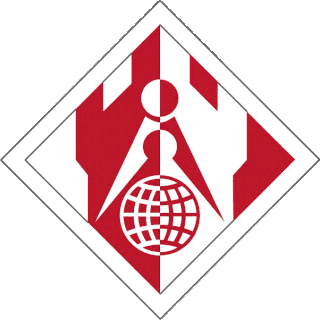 W
WThe Corps of Engineers of the Indian Army has a long history dating back to the mid-18th century. The earliest existing subunit of the Corps dates back to 1777 while the Corps officially recognises its birth as 1780 when the senior most group of the Corps, the Madras Sappers were raised.
 W
WThe Corps of Engineers (ENG) is the military engineering branch of the Defence Forces of Ireland. The Corps is responsible for combat engineering, construction engineering, and fire fighting services within the Defence Forces. The main role of the combat engineers is to provide engineering on the battlefield; the Corps has successfully leveraged its skill and expertise in several of the Irish Army's deployments on United Nations operations.
 W
WThe Corps of Engineers of the Indian Army has a long history dating back to the mid-18th century. The earliest existing subunit of the Corps dates back to 1777 while the Corps officially recognises its birth as 1780 when the senior most group of the Corps, the Madras Sappers were raised.
 W
WThe Corps of Royal Engineers, usually just called the Royal Engineers (RE), and commonly known as the Sappers, is a corps of the British Army. It provides military engineering and other technical support to the British Armed Forces and is headed by the Chief Royal Engineer. The Regimental Headquarters and the Royal School of Military Engineering are in Chatham in Kent, England. The corps is divided into several regiments, barracked at various places in the United Kingdom and around the world.
 W
WThe Engineering Arm, or l'arme du génie, is the Military engineering arm of the French Army.
 W
WThe Indonesian Army Corps of Engineers, abbreviated Pusziad, or simply Zeni is an Indonesian Army Central Executive Agency made up of some 15,000 civilian and military personnel, making it one of Southeast Asia's and the ASEAN's, largest public engineering, design, and construction management agencies. The Corps is involved in a wide range of disaster relief and public works projects within the republic, as well as in combat support operations. The Indonesian term for military engineers, Zeni, is derived from the Dutch genie, meaning sapper.
 W
WThe Israeli Combat Engineering Corps is the combat engineering forces of the Israel Defense Forces.
 W
WThe Royal Australian Engineers (RAE) is the Military engineering corps of the Australian Army. The RAE is ranked fourth in seniority of the corps of the Australian Army, behind the Staff Cadets, Armoured and Artillery Corps. The corps was formed by the amalgamation of the various colonial engineer corps of the states and territories of Australia in 1902 and since then has served in various conflicts including World War I, World War II and the Vietnam War. The corps has also served on numerous peacekeeping operations and was heavily involved in the Australian contribution to the war in Afghanistan.
 W
WThe Corps of Royal Electrical and Mechanical Engineers is a corps of the British Army that maintains the equipment that the Army uses. The corps is described as the "British Army's Professional Engineers".
 W
WThe Engineer Troops of the Russian Federation are a military administrative corps of the Ground Forces of the Russian Federation designed to perform military engineering operations, requiring special training of personnel and use of means of engineer equipment, as well as for damaging the enemy through application of engineer ammunition.
 W
WThe South African Army Engineer Formation is the controlling entity of all South African Army military engineering units. The Formation is currently commanded by the General Officer Commanding (GOC); Brigadier General D.W. Nkosi, as of early 2013.
 W
WThe Swedish Engineer Troops is the engineer branch of the Swedish Army. The Troops were formed after the Defence Act of 1936. Today, it consists of a single unit, the Göta Engineer Regiment and two schools, the Swedish Army Field Work School and the EOD School
 W
WThe United States Army Corps of Engineers (USACE) is an engineer formation of the United States Army that has three primary mission areas: engineer regiment, military construction, and civil works. The day-to-day activities of the three mission areas are administered by a lieutenant general known as the commanding general/chief of engineers. The chief of engineers commands the engineer regiment, composed of combat engineer army units, and answers directly to the chief of staff of the army. Combat engineers come from throughout the service and can be active duty, national guard, or army reserve. Combat engineers duties are to construct fighting positions, fixed/floating bridges, and obstacles and defensive positions, place and detonate explosives (sappers), conduct operations that include route clearance of obstacles and rivers, prepare and install firing systems for demolition and explosives, and detect mines. For the military construction mission the commanding general is directed and supervised by the assistant secretary of the army for installations, environment, and energy, whom the President appoints and the Senate confirms. Military construction relates to construction on military bases and worldwide installations.